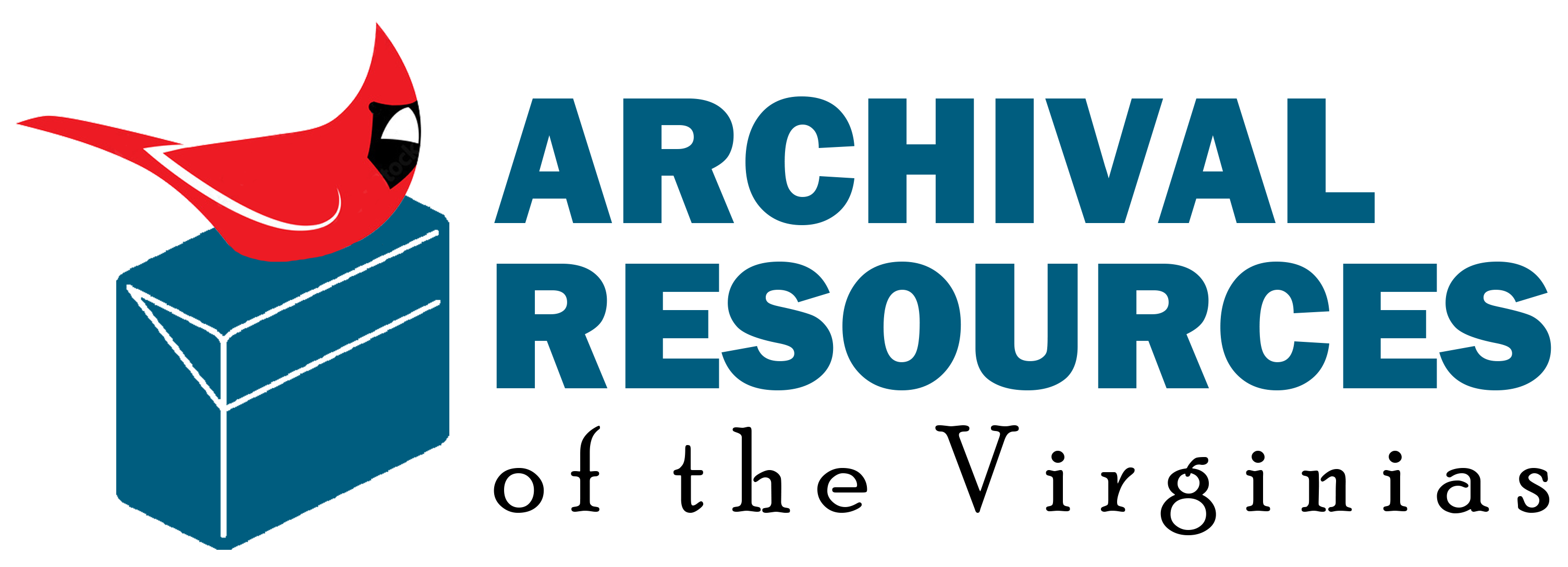- Repository:
- West Virginia and Regional History Center
- Published:
- unknown
- Subjects:
- Churches -- Methodist | Elections | Judges - letters and papers. | Lawyers - letters and papers. | Politics and government. | Women's history -- 1800-1849 | Women's history -- 1850-1899 | Women's history -- 1900-1929 | Women's history -- 1929-1950 | Women's history -- 1951-present | World War, 1914-1918
ARVAS is an aggregator of archival resources. ARVAS does not have control of the descriptive language used in our members’ finding aids. Finding aids may contain historical terms and phrases, reflecting the shared attitudes and values of the community from which they were collected, but are offensive to modern readers. These include demeaning and dehumanizing references to race, ethnicity, and nationality; enslaved or free status; physical or mental ability; religion; sex; and sexual orientation and gender identity. Many institutions and organizations are in the process of reviewing and revising their descriptive language, with the intent to describe materials in more humanizing, inclusive, and harm-reductive ways. As members revise their descriptive language, their changes will eventually be reflected in their ARVAS finding aids
- Repository:
- West Virginia and Regional History Center
- Published:
- unknown
- Subjects:
- Banks - Union Bank and Trust Company. | Banks and banking | Coal mining -- Strikes | Coal mining. | Court records | Depression. | Diaries and journals. | Election of 1912. | Elections | Epidemics | Genealogy | Lawyers - letters and papers. | Politics and government. | Railroads - Chesapeake and Ohio Railroad. | Spanish-American War, 1898 | Women's history -- 1850-1899 | Women's history -- 1900-1929 | Women's history -- 1929-1950 | Women's history -- 1951-present | World War, 1914-1918
- Repository:
- West Virginia and Regional History Center
- Published:
- unknown
- Subjects:
- Birth, marriage, and death records. | Botany | Floods | Genealogy | Medicine. SEE ALSO Folk medicine. | Teachers | Weather | Women's history -- 1800-1849 | Women's history -- 1850-1899 | Women's history -- 1900-1929 | Women's history -- 1929-1950 | Women's history -- 1951-present | Women's history -- Pre-1800 | World War, 1914-1918
- Repository:
- West Virginia and Regional History Center
- Published:
- unknown
- Subjects:
- Account books | African Americans -- Education (Higher) | African Americans - Schools for Freedmen. | Diaries and journals. | Education | Ledger books. | Missionaries | Newspapers. | Photographs. | Schools - Jefferson County. | Schools. SEE ALSO Academies | Scrapbooks | Segregation in education | Teachers' letters and papers. | Universities and colleges | Women -- Education | Women's history -- 1850-1899 | Women's history -- 1900-1929 | Women's history -- 1929-1950 | Women's history -- 1951-present | World War, 1914-1918 -- Letters | World War, 1939-1945 -- Letters | World War, 1939-1945 | World War, 1914-1918
- Repository:
- West Virginia and Regional History Center
- Published:
- unknown
- Subjects:
- Account books | African Americans -- Education (Higher) | African Americans - Schools for Freedmen. | African Americans -- Segregation -- West Virginia | African Americans -- Appalachian Region | Brown, John -- Fort-Museum | Builders and contractors. | Baptists | Education | Ephemera. | Freedmen's Schools. | Jefferson County - Schools. | Ledgers. | Missionaries | Newspapers. | Photographs. | Schools - Jefferson County. | Schools. SEE ALSO Academies | Teachers' letters and papers. | Universities and colleges | Women -- Education | Women's history -- 1850-1899 | Women's history -- 1900-1929 | Women's history -- 1929-1950 | Women's history -- 1951-present | World War, 1914-1918 -- Letters | World War, 1939-1945 -- Letters | World War, 1939-1945 | World War, 1914-1918
